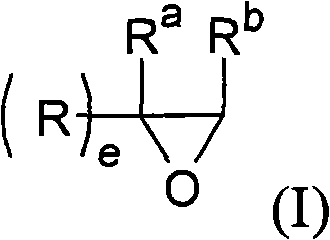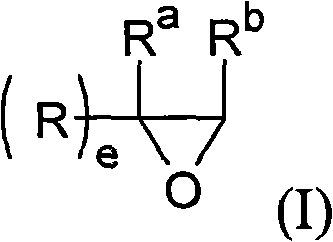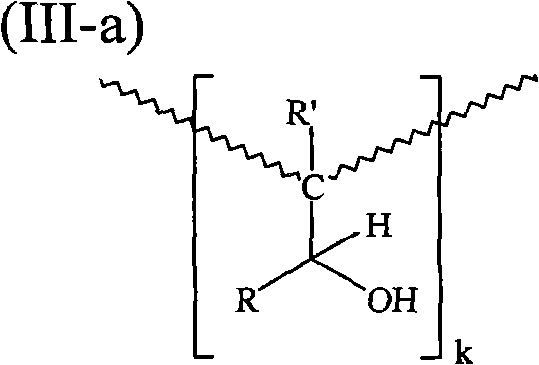Dispersing and emulsifying resins comprising polyether
A technology for dispersing resins and resins, which is applied in latex paints, organic dyes, transportation and packaging, and can solve problems such as insufficient viscosity consistency, insufficient paste stability, and low filling degree
- Summary
- Abstract
- Description
- Claims
- Application Information
AI Technical Summary
Problems solved by technology
Method used
Image
Examples
Embodiment
[0096] The invention is illustrated in more detail by the following examples.
[0097] Reactants: Carbonyl-hydrogenated ketone-aldehyde resins
[0098] The preparation method of the ketone-aldehyde resin of described carbonyl-hydrogenation is as follows:
[0099] Preparation of base resins based on acetophenone and formaldehyde for further hydrogenation
[0100] Add 1200g of acetophenone, 220g of methanol, 0.3g of benzyltributylammonium chloride, and 360g of 30% aqueous formaldehyde into the container and stir evenly. Then, while stirring, 32 g of a 25% sodium hydroxide aqueous solution was added. Then, at 80 to 85° C., within 90 minutes, 655 g of a 30% formaldehyde solution was added while stirring. After stirring for 5 hours at reflux temperature, the stirrer was switched off and the aqueous phase was separated from the resinous phase. The crude product was washed with water to which acetic acid had been added, and the washing was continued until a molten sample of the r...
PUM
| Property | Measurement | Unit |
|---|---|---|
| Melting point | aaaaa | aaaaa |
Abstract
Description
Claims
Application Information
 Login to View More
Login to View More - R&D
- Intellectual Property
- Life Sciences
- Materials
- Tech Scout
- Unparalleled Data Quality
- Higher Quality Content
- 60% Fewer Hallucinations
Browse by: Latest US Patents, China's latest patents, Technical Efficacy Thesaurus, Application Domain, Technology Topic, Popular Technical Reports.
© 2025 PatSnap. All rights reserved.Legal|Privacy policy|Modern Slavery Act Transparency Statement|Sitemap|About US| Contact US: help@patsnap.com



